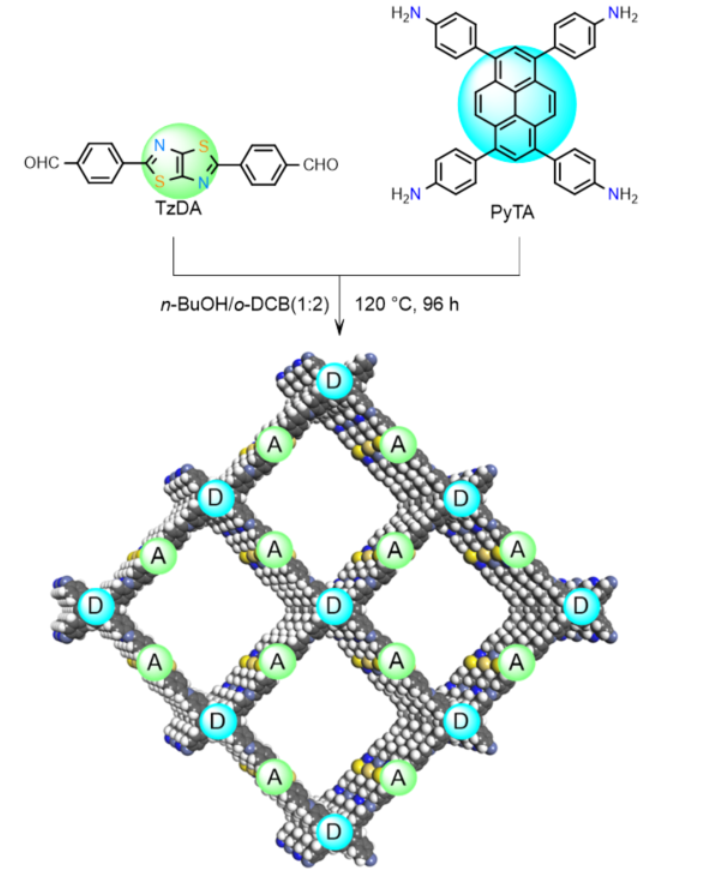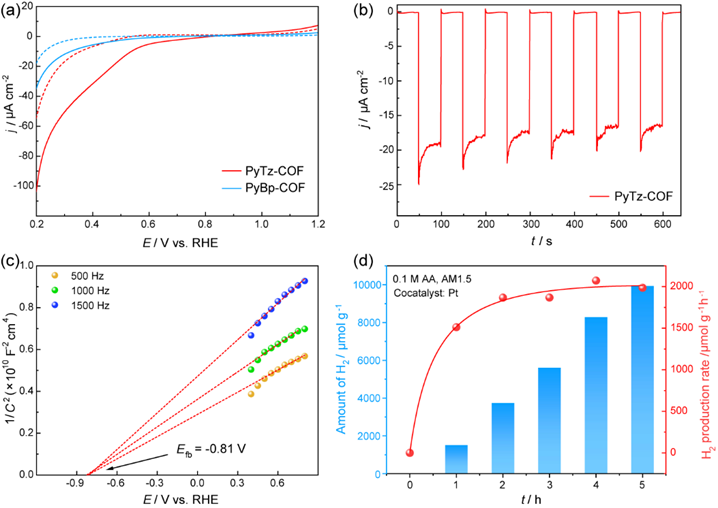Research Progress
Sunlight-driven hydrogen production has been considered as one of the most important renewable energy sources, while active photocatalyst is a prerequisite for efficient hydrogen production. 2D covalent organic frameworks (COFs) could have well-defined arrangements of photo- and electro-active units that serve as electron or hole transport channels for solar energy harvesting and conversion, however, their insufficient charge transfer and rapid charge recombination impede the sunlight-driven photocatalytic performance.
Motivated by such a challenge, a research team led by Prof. WEN Ke and Prof. YANG Hui at Shanghai Advanced Research Institute (SARI), collaborated with Prof. ZHANG Yue-Biao at ShanghaiTech University reported a novel photoactive 2D COF from donor Py and acceptor Tz building units, which enabled remarkable photogenerated charge separation and efficient charge migration. The research results were featured on front cover of Angewandte Chemie International Edition.
Based on physical structural characterizations, scientists conjectured that Thiazolo[5,4-d]Thiazole might help to boost photo-absorbing ability of previously reported TpTz COF and constructed the new donor-acceptor system from the electron-rich pyrene (Py) and electron-deficient thiazolo[5,4-d]thiazole (Tz). The PyTz-COF demonstrated high photocatalytic activitity for sustainable and efficient water splitting with a photocurrent up to 100 uA cm-2 at 0.2 V vs. RHE and could reach a hydrogen evolution rate of 2072.4 umolg-1 h-1, which exceeds the values of many previously reported COFs.
This study not only realized the effective separation and migration of photogenerated electrons and holes, but also revealed a new mechanism of COF photocatalysis. More importantly, it would inspire future development of sunlight-driven photocatalysts for solar energy harvesting and conversion.

Figure 1. Synthetic route for PyTz-COF (Image by SARI)

Figure 2. Photoelectrochemical and photocatalytic performance of PyTz-COF (Image by SARI)
Contact: Prof. Wenke
Shanghai Advanced Research Institute, Chinese Academy of Sciences
Email: wenk@sari.ac.cn





